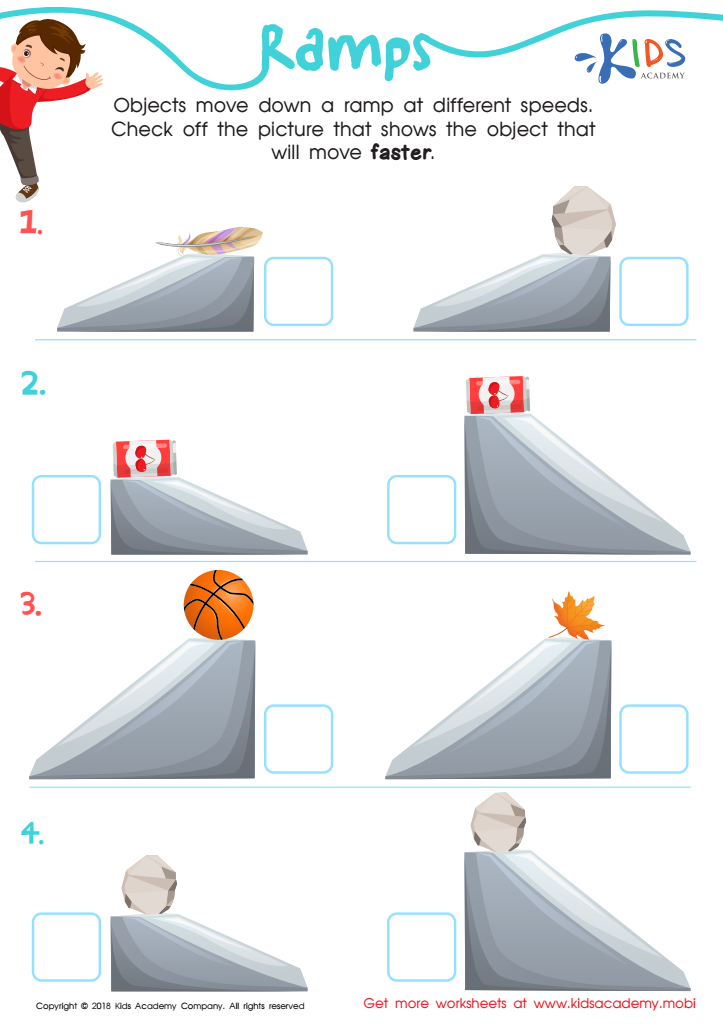Analyzing direction Worksheets for Kids
1 filtered results
-
From - To


Ramps Worksheet
Question/Answer
How to train the Analyzing direction skill in Kindergarten students learning about Physical Science?
To train Kindergarten students in analyzing direction for Physical Science, use simple, engaging activities like blowing bubbles and observing their direction, rolling balls on different surfaces, or using toy cars on ramps. These activities help them visualize and understand the concept of direction through practical, hands-on experiences, fostering their analytical skills in a fun and interactive way.
Why is the Analyzing direction skill important for Kindergarten students?
The Analyzing direction skill is important for Kindergarten students because it lays the foundation for critical thinking and problem-solving. It helps them understand and follow instructions, enhances their spatial awareness, and supports the development of their reading and math skills. Early mastery of this skill promotes independent learning and academic success.
How to test a Kindergarten student’s Analyzing direction skills?
To test a Kindergarten student's analyzing direction skills, provide simple, age-appropriate tasks or challenges that require following or determining directions. For instance, set up an obstacle course where they must navigate based on verbal or pictorial instructions, or use simple maps with landmarks. Observe their ability to understand and execute the instructions accurately to assess their skill level.
 Assign to the classroom
Assign to the classroom












